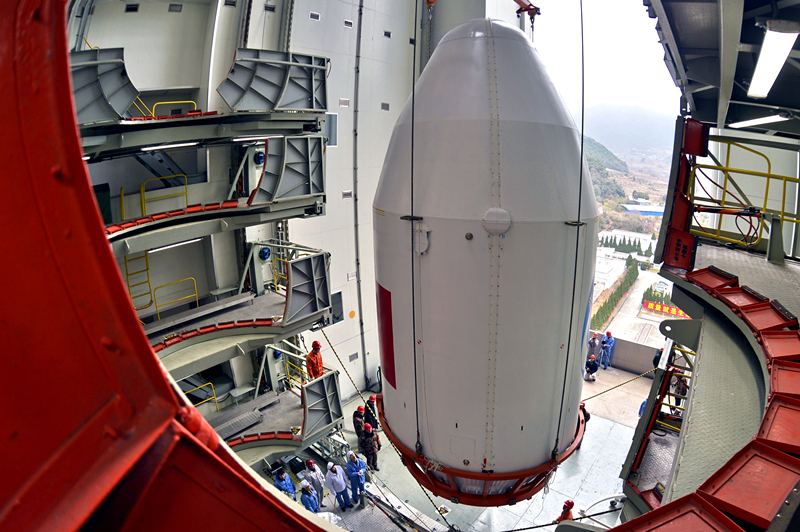Beidou positioned to provide global coverage


Satellite network will provide data for countries participating in the Belt and Road Initiative, as Zhao Lei reports.
When cyclists use one of the Mobike or ofo shared bikes that seem to dot almost every major city in China, they probably don't relate the colorful two-wheeler in front of them with a state-of-the-art spacecraft in orbit high above the Earth.
But without the navigational and positioning services that satellites provide, the entire bike-sharing sector would be no more than a pipe dream.
Similarly, without satellite-based navigation devices, tourists and motorists would find that making their way around a megacity or an unfamiliar place would be like solving a puzzle in the dark.
"Like electricity, satellite-based navigation and positioning services have become an indispensable part of people's lives," said Chi Jun, a senior project manager for the China Academy of Space Technology at China Aerospace Science and Technology Corp.
"If these services malfunctioned, our lives, work and even the national economy would be extensively affected."
To ensure the stability of the services, China continues to build and improve the domestically developed Beidou Navigation Satellite System.
It is one of the nation's largest space programs and the fourth space-based navigation system in the world, following GPS in the United States, GLONASS in Russia and the European Union's Galileo system.
On Monday, the fifth and sixth third-generation Beidou satellites were sent into space atop a Long March 3B carrier rocket from the Xichang Satellite Launch Center in Sichuan province.
They are now working from a medium Earth orbit thousands of kilometers above the planet, and will operate for at least 12 years in space, according to the China Satellite Navigation Office.
Pressure
The vast space-based network is now on a fast track to achieving global coverage capability as a result of the efforts of numerous scientists, engineers and workers, said Chi, from the space technology academy, the biggest developer of Beidou satellites.
- Ten photos from across China: Dec 12 - 18
- Visa-free measures spur surge in visitors
- Avalanche in Xinjiang leaves one dead
- Research ward at children's hospital in Shanghai treats over 200 patients with rare diseases
- Chongqing symposium examines planning cities around sound, smell, touch
- Former Qingdao legislature chief under investigation





































